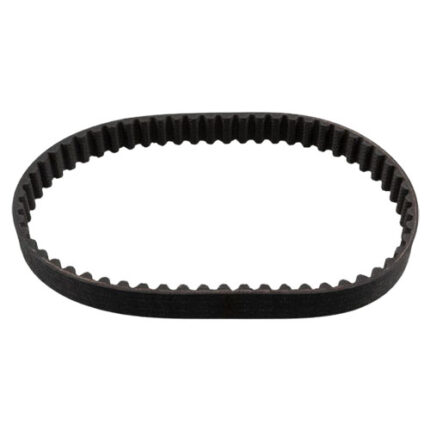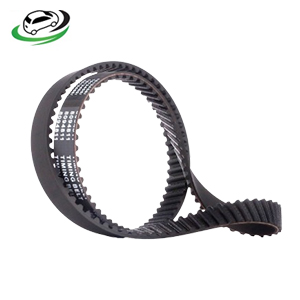-10%
Get Front Left Ball Joint AUDI A3 TDI/S3 quattro/30 TFSI/2.0 TDI/1.6 TDI/1.4 TSI/1.8 TFSI 3C0407365AS
A ball joint is a crucial component in a vehicle’s suspension system, providing a pivotal connection between the steering knuckle and the control arm. It allows for smooth and flexible movement of the suspension system while maintaining stability and control of the vehicle. This guide provides a comprehensive overview of the ball joint’s design, function, types, benefits, maintenance, and replacement.
Design and Function
Design:
A ball joint typically consists of several key components:
- Ball Stud: The spherical part of the ball joint that rotates within the socket. It is usually made from high-strength steel to withstand the stresses of driving.
- Socket: The housing that encases the ball stud. It is typically made from metal or durable plastic and is lined with a grease-retaining material to reduce friction.
- Boot or Dust Cover: A rubber or synthetic cover that protects the ball joint from dirt, debris, and moisture. It helps to maintain lubrication and prevent premature wear.
- Grease Fitting: Some ball joints come with a grease fitting (or zerk fitting) to allow for periodic lubrication.
- Retaining Ring: Keeps the ball joint components in place and ensures proper alignment.
Function:
The primary functions of a ball joint are:
- Allowing Movement: Provides a flexible connection that allows for the movement and articulation of the suspension system. This enables the wheels to move up and down and turn left and right.
- Maintaining Alignment: Ensures proper alignment of the steering and suspension components, which is crucial for handling and vehicle stability.
- Absorbing Shocks: Helps absorb and dampen road shocks and vibrations, contributing to a smoother ride.
- Supporting Load: Carries a significant portion of the vehicle’s weight and suspension loads, including the weight of the vehicle and forces from acceleration, braking, and cornering.
Types of Ball Joints
1. Upper Ball Joints:
- Description: Located at the top of the suspension assembly, connecting the control arm to the steering knuckle.
- Advantages: Common in vehicles with independent front suspension systems, providing crucial articulation and support.
2. Lower Ball Joints:
- Description: Positioned at the bottom of the suspension assembly, connecting the lower control arm to the steering knuckle.
- Advantages: Often carries a larger load compared to upper ball joints and is critical for handling and stability.
3. Press-in Ball Joints:
- Description: Installed by pressing the ball joint into a socket or housing. Often used in older vehicles or specific designs.
- Advantages: Can be less expensive and simpler to replace in certain applications.
4. Bolt-on Ball Joints:
- Description: Attached to the suspension assembly using bolts and nuts. Easier to replace compared to press-in types.
- Advantages: Allows for straightforward replacement and adjustment in many modern vehicles.
5. Adjustable Ball Joints:
- Description: Feature an adjustable design that allows for fine-tuning of the suspension alignment.
- Advantages: Provides the ability to adjust alignment settings, which can be beneficial for performance tuning or correction.
Benefits
1. Enhanced Steering Control:
- Precision Movement: Ensures smooth and precise movement of the suspension and steering components, contributing to accurate steering response.
- Handling Stability: Helps maintain proper alignment and handling characteristics, improving vehicle stability and control.
2. Improved Ride Comfort:
- Shock Absorption: Absorbs road shocks and vibrations, resulting in a smoother and more comfortable ride for passengers.
- Reduced Noise: Helps to minimize road noise and vibrations transmitted to the cabin.
3. Durability:
- Robust Construction: Designed to withstand significant stress and wear, contributing to long-lasting performance.
- Protective Boot: The boot or dust cover helps to keep dirt and moisture out, extending the lifespan of the ball joint.
4. Suspension Performance:
- Articulation: Allows for proper movement and articulation of the suspension system, enhancing overall vehicle performance and handling.
Maintenance and Troubleshooting
1. Regular Inspection:
- Check for Wear: Inspect the ball joints for signs of wear, such as excessive play, noise, or looseness. Pay attention to any unusual sounds during driving, such as clunking or popping noises.
- Boot Condition: Examine the rubber boot for cracks, tears, or leaks. A damaged boot can lead to contamination and accelerated wear.
2. Lubrication:
- Grease Fitting: If the ball joint has a grease fitting, ensure it is properly lubricated according to the manufacturer’s recommendations. Regular lubrication helps to maintain smooth operation and extend the life of the joint.
- Check for Proper Lubrication: Verify that there is sufficient grease in the joint. Lack of lubrication can cause premature wear and failure.
3. Replacement:
- Signs of Failure: Replace the ball joint if you notice excessive play, noise, or if the boot is damaged. A worn or damaged ball joint can affect handling and safety.
- Replacement Procedure: Replacing a ball joint typically involves lifting the vehicle, removing the wheel, disconnecting the ball joint from the control arm and steering knuckle, and installing a new joint. Follow the manufacturer’s instructions and ensure proper alignment after installation.
4. Alignment Checks:
- Proper Alignment: After replacing a ball joint, it is essential to have the vehicle’s alignment checked and adjusted if necessary. Proper alignment ensures optimal handling and tire wear.
Seasonal Considerations
1. Winter:
- Check for Ice and Snow: Inspect the ball joints and related components for signs of ice or snow buildup, which can affect performance.
- Regular Inspection: Ensure that the ball joints are in good condition before harsh winter driving conditions.
2. Summer:
- Heat Exposure: In hot climates, check for signs of overheating or excessive wear due to high temperatures. Ensure that the ball joints are properly lubricated.
Follow us on Facebook for more parts.



